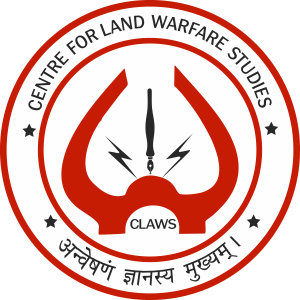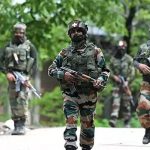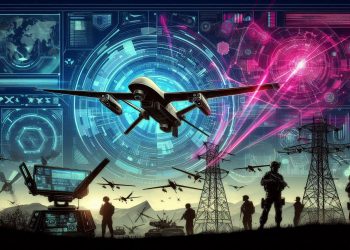The 16th BRICS Summit, chaired by Russia in Kazan last month, focused on strengthening multilateralism, countering terrorism, and promoting sustainable development. The Summit welcomed 13 new BRICS partner countries, highlighting the group’s expanding influence on the global stage. Formed by Brazil, Russia, India, and China, BRICS expanded to include South Africa in 2010. President Putin remarked that more than 30 nations have shown interest in joining the group. Initially founded as an economic forum, could BRICS evolve into a significant geopolitical force in a multipolar world order, potentially counterbalancing the G7’s influence?
BRICS vs. G7
BRICS represents around five times the population of the G7 nations. In 1992, G7 nations made up 45.5% of global GDP, while BRICS held just 16.7%. As of 2024, BRICS countries collectively account for approximately 35% of the world’s GDP in terms of purchasing power parity (PPP), compared to the G7’s 30%. Between 2000 and 2023, BRICS+ expanded its share of global merchandise exports from 10.7% to 23.3%. Meanwhile, the G7’s share fell significantly from 45.1% to 28.9%.
As per the IMF, the BRICS nations are projected to contribute significantly to global economic growth in the coming years. Its latest forecasts indicate that China alone is expected to account for 22% of global growth over the next five years, surpassing the combined contribution of all G7 countries. In terms of economic growth rates, the BRICS countries are anticipated to experience an average growth rate of 3.6% in 2024, which is notably higher than the G7’s average of 1%.
Structural Issues
G7 members have deep-rooted economic, security, and diplomatic alliances, facilitated through multilateral institutions like NATO and the EU. This allows G7 nations to take a unified stance on global issues, whether it is imposing sanctions, coordinating monetary policy, or addressing security threats. G7 members frequently adopt coordinated policies across various areas, reflecting a high degree of integration and mutual commitment to shared goals.
BRICS, on the other hand, lacks this level of formal integration. Its members are not bound by mutual defence treaties or economic compacts. Instead, BRICS functions as a loosely coordinated forum for dialogue and collaboration, rather than as a unified bloc with binding commitments. The lack of a structured alliance makes it challenging for BRICS to take coordinated action on international issues. Members often have differing national priorities and, at times, conflicting foreign policy interests. For instance, China and India have border disputes and strategic differences, making it difficult to reach consensus on security issues. Russia’s position on international conflicts (like those in Ukraine and Syria) may not align with other BRICS members.
Is BRICS an Anti-West Alliance?
While China, Russia, and Iran might support positioning BRICS as a counterbalance to the G7 or an alternative to the U.S.-led Western order, not all BRICS members share this perspective. For example, Prime Minister Modi stated that BRICS is not an “anti-West alliance.” Many members, particularly newer ones, view BRICS as a platform to expand their diplomatic flexibility, with each member having distinct motivations for participating in the group.
On de-dollarisation, there is certainly interest among BRICS members in reducing dependence on dollars and finding ways to bypass SWIFT, but there is a noticeable gap between the rhetoric about diversifying away from the U.S. dollar and the actual progress being made. The more significant aspect of BRICS is its diplomatic symbolism. The fact that an increasing number of countries are looking to explore alternatives outside of Western-led institutions underscores this point.
The Fractured Pattern of Voting in UN
While economic indicators and symbolic strength are important, internal cohesion is equally vital for the political power of any international organisation. A clear, though not the most critical, indicator of this internal political cohesion is voting behaviour in the UN General Assembly. Internal cohesion within a structure is often reflected by a unified voting approach on international platforms. This is evident with NATO and the EU, whose member countries typically vote in alignment in the UN General Assembly.
In UNGA voting, BRICS members demonstrate a range of positions that reveal internal differences, especially on resolutions involving Russia. Russia and China may vote in solidarity, consistently opposing Western-backed resolutions on issues such as Crimea and Ukraine. India and South Africa, on the other hand, often choose to abstain, reflecting a more neutral or non-aligned stance. Brazil also tends to abstain but has occasionally voted in favour of resolutions critical of Russia. The newer members, such as Saudi Arabia and Argentina, have frequently aligned with Western perspectives by voting against Russia on key resolutions. This variation in voting behaviour highlights the challenge of achieving internal cohesion within BRICS.
Conclusion:
While BRICS is gaining prominence, supported by economic growth, it still lags in resolving both internal and international issues and in building unified international support. While G7 nations maintain unified stances on global matters, BRICS lack formal integration, conflicting interests, and diverging foreign policies. For BRICS to emerge as a true counterweight to the G7, it will need to address its internal fractures, particularly on critical global issues.
For India participation in both G7 and BRICS exemplifies New Delhi’s nuanced approach to strategic engagement with major global powers. Although not a formal member of the G7, India’s regular invitation to its annual summits signifies the West’s recognition of New Delhi as an influential interlocutor and collaborator on pressing international issues. The G7 provides a significant platform for India to project itself as a leader of the Global South. This positioning not only bolsters India’s global image but also brings tangible advantages in economic terms. By being recognized on this stage, India gains increased investment opportunities, improved international rankings, and an enhanced appeal to foreign investors. Through BRICS, India exercises its strategic autonomy within a multipolar world, facilitating avenues to strengthen its alignment with Moscow. India should drive a similar alliance independent of both the blocs. The irony is that India, which has led initiatives like the SAARC, now finds itself more constrained within multilateral frameworks where its leadership role is somewhat muted.













